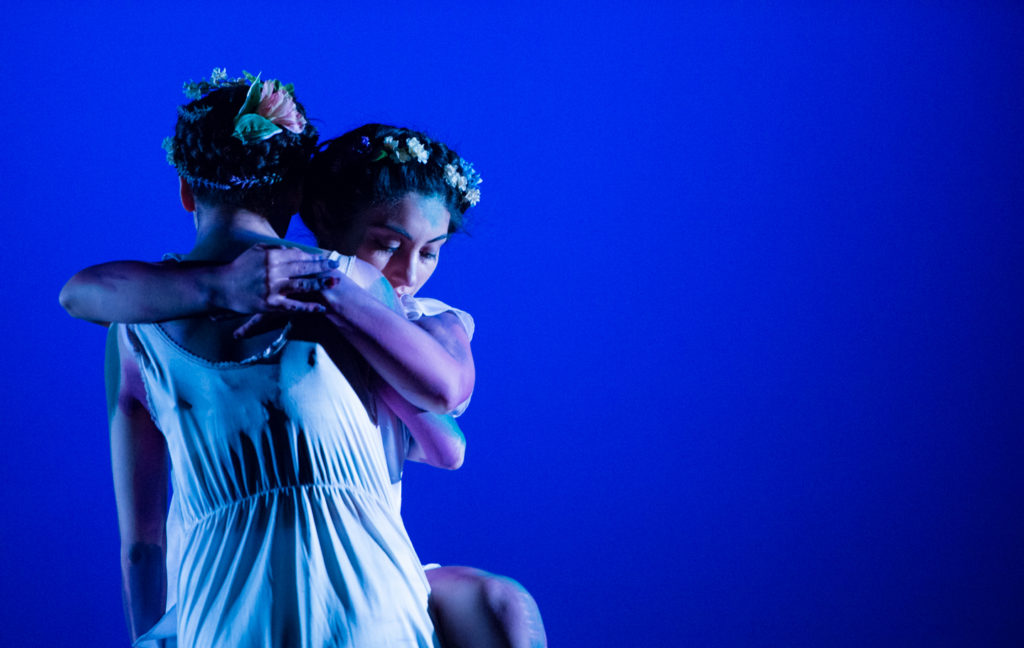
On March 17, Mills College, the Oakland, California–based women’s college—and home to one of the nation’s oldest collegiate dance programs—announced its impending closure.
The private liberal arts school will transition to Mills Institute, a non–degree-conferring institution that will sustain the college’s mission. Programming and structure for the Institute will be decided in the coming months.
The news came as a shock to many students, faculty, staff and alumni. “It caught all of us off guard,” says professor Sheldon Smith, who will take over as chair of the dance department after Ann E. Murphy’s retirement at the end of this semester. “Though we had an intuition that the school would have to have some kind of radical transformation. We’ve been in a financial problem for quite some time.”

In her open letter to the Mills community, president Elizabeth L. Hillman cited “economic burdens of the COVID-19 pandemic, structural changes across higher education, and Mills’ declining enrollment and budget deficits” as reasons for this transformation away from a four-year degree-conferring college.
“As an alum, I’m very sad,” says Garth Grimball, MFA ’13 and current ballet teacher at Mills. “But I’m most sad for the current students who had the foundation pulled out from under them.” The fall 2021 semester will be the last in which first-year undergraduates can enroll, and the final degrees will most likely be conferred in 2023. Mills will then work with other universities (possibly University of California, Berkeley, which already has a partnership with Mills) to enable current students to finish their degrees.
There has been pushback in the community as many current students and alumni of the 169-year-old institution feel the loss of their alma mater keenly already. But “how much that will add up to anything is to be seen,” says Smith.
Specifics as to what the Mills Institute will look like are also unclear at this point. “Nobody has defined what the Mills Institute is or what the mission will be,” says Grimball. “I hope that the foundation and institutional knowledge of Mills continues in a real academic way.” Decisions about whether or not dance will be part of the Institute have yet to be finalized, but Smith says proposals are being made that would include dance.
The loss of Mills College will send ripples through the dance world. “Our history is significant, not only to the Bay Area dance community but to the development of American modern dance, postmodern dance and current practices in movement arts,” says Smith. “Students from Mills are all over the world dancing, choreographing, performing, writing, teaching and advocating. To have it come to an end feels not only like the end of an era but also a significant blow to the stability of a precarious artform.”

With its emphasis on pushing boundaries, collaboration and embracing diverse perspectives, Mills Dance has a long, rich history of producing innovative choreographers, performers, teachers and dance scholars, including Trisha Brown, Lori Belilove and Molissa Fenley. Students have not only created within the boundaries of Mills’ Oakland campus, but have immersed themselves in the vibrant San Francisco Bay Area dance scene, with opportunities to learn from and collaborate with changemakers like Anna Halprin, Yvonne Rainer and AXIS Dance Company.
As Smith looks towards the transition and his role as chair for the next two years, he is cautiously optimistic about the future. “As sad as these years will be, it’s an opportunity to really celebrate what we have been,” he says. “It’s also an opportunity to light some fires under where dance education is going.”
Smith says remaining students will be able to craft what they want from their time at Mills and what they’ll take out into the greater dance world. “The next two years, the gloves are off,” he says. “I think we will be compelled more than ever to work with students to apply a critical pedagogy lens to our entire curriculum. I intend for the department to foreground that dance education is an always evolving resource, that a certain amount of anarchy is necessary at this moment, and that some intentional unpredictability may help us cut new pathways forward for whatever comes next.”
Smith and the current faculty will soon be working towards crafting several celebratory concerts in which alumni will be invited to come back and share their work. “We have been part of something that has had such a rich and impactful history. Eighty-plus years isn’t nothing,” says Smith. “Our department has touched so many lives, whether it’s a direct connection or through someone else. It feels nice to be part of that legacy.”




